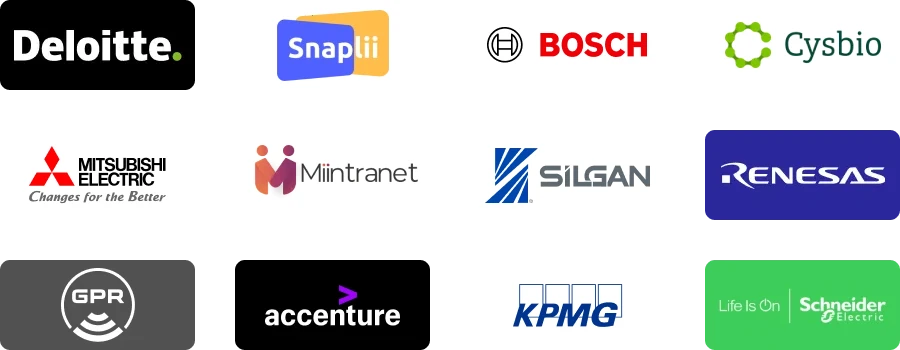| REPORT ATTRIBUTE |
DETAILS |
| Historical Period |
2019-2022 |
| Base Year |
2023 |
| Forecast Period |
2024-2032 |
| Europe Laser Materials Market Size 2023 |
USD 356.70 Million |
| Europe Laser Materials Market, CAGR |
4.46% |
| Europe Laser Materials Market Size 2032 |
USD 530.28 Million |
Market Overview
The Europe laser materials market is projected to grow from USD 356.70 million in 2023 to an estimated USD 530.28 million by 2032, with a compound annual growth rate (CAGR) of 4.46% from 2024 to 2032. This growth is driven by increasing applications of laser technology across various industries, including automotive, aerospace, and medical devices.
Key market drivers include the growing adoption of laser technology for material processing due to its precision and efficiency. The trend towards miniaturization in electronics and the need for advanced manufacturing solutions in sectors such as automotive and aerospace are also fueling demand. Additionally, increasing investments in research and development are leading to innovations in laser materials, enhancing their performance and application scope.
Geographically, Germany, France, and the UK dominate the Europe laser materials market due to their strong industrial base and focus on technological advancements. These countries are home to key players such as Trumpf, Coherent, and Lumentum, who are pivotal in driving innovation and growth in the market. Other notable players include IPG Photonics, Jenoptik, and Rofin-Sinar Technologies, contributing to the market’s competitive landscape and regional expansion.
Access crucial information at unmatched prices!
Request your sample report today & start making informed decisions powered by Credence Research Inc.!
Download Sample
Market Drivers
Increasing Demand in Industrial Manufacturing
The industrial manufacturing sector is a major driver of the Europe laser materials market. Laser technology’s precision, speed, and flexibility make it indispensable in various applications, including cutting, welding, marking, and engraving. The automotive industry, in particular, relies heavily on laser materials for manufacturing processes that require high accuracy and repeatability. With the growing trend towards automation and smart manufacturing, the demand for advanced laser materials is set to increase. The ability of lasers to work with a wide range of materials, including metals, plastics, and composites, enhances their appeal in industrial applications. This versatility allows manufacturers to produce complex and intricate designs with minimal waste, contributing to cost efficiency and sustainability goals. For instance, major automotive manufacturers like Audi and Volkswagen are increasingly adopting laser technologies for welding and cutting applications to improve production efficiency and quality.
Advancements in Laser Material Technology
Technological advancements in laser materials are significantly contributing to the market’s growth. Innovations such as the development of high-power laser diodes, fiber lasers, and ultrafast lasers have expanded the capabilities and applications of laser systems. These advancements improve the efficiency, output quality, and operational lifetime of laser materials, making them more attractive to various industries. For instance, fiber lasers have gained popularity due to their compact size, high efficiency, and ability to deliver high-quality beam profiles. Moreover, the development of new laser materials, such as ytterbium-doped fibers and thin-disk lasers, has opened up new possibilities in materials processing, medical applications, and telecommunications. As research and development activities continue, the market is likely to witness the introduction of more innovative and efficient laser materials, further driving demand. The introduction of technologies like robotic surgery aids and fiber-optic delivery systems has broadened the applications of medical lasers, enhancing their adoption across various medical fields.
Growth in Medical and Healthcare Applications
The medical and healthcare sector is another significant driver of the Europe laser materials market. Laser technology is increasingly used in various medical applications, including surgical procedures, dermatology, and ophthalmology. The precision and control offered by lasers make them ideal for minimally invasive surgeries, reducing recovery times and improving patient outcomes. Additionally, lasers are used in diagnostic equipment, such as optical coherence tomography (OCT) systems, which provide high-resolution imaging of tissues. The rising prevalence of chronic diseases and the aging population in Europe are driving demand for advanced medical treatments and technologies, including those utilizing laser materials. As healthcare systems continue to adopt laser technology for a broader range of applications, the demand for specialized laser materials is expected to grow.
Growing Focus on Sustainability and Environmental Regulations
The increasing emphasis on sustainability and adherence to environmental regulations are also influencing the Europe laser materials market. Lasers are energy-efficient tools that can significantly reduce waste in manufacturing processes, aligning with the growing trend towards sustainable production. The European Union’s stringent environmental regulations and initiatives aimed at reducing carbon emissions are encouraging industries to adopt cleaner and more efficient technologies. Laser materials enable precise and controlled material processing, which minimizes waste and reduces the need for harmful chemicals and solvents. This not only helps companies comply with environmental regulations but also enhances their corporate social responsibility (CSR) profile. As businesses across Europe increasingly prioritize sustainability, the adoption of laser technology and the demand for laser materials are likely to rise.
Market Trends
Integration of Laser Technology with Automation and Industry 4.0
The integration of laser technology with automation and Industry 4.0 principles is a significant trend in the Europe laser materials market. As industries across Europe strive for greater efficiency, precision, and flexibility, the adoption of automated laser systems has accelerated. These systems are increasingly equipped with advanced control software and robotics, allowing for seamless integration into smart manufacturing environments. This trend is particularly pronounced in the automotive, aerospace, and electronics sectors, where high precision and adaptability are crucial. The ability of lasers to perform tasks such as cutting, welding, and marking with high accuracy makes them ideal for automated processes. Furthermore, the use of data analytics and IoT-enabled devices in conjunction with laser systems enhances production monitoring and quality control. For instance, Prima Power has been instrumental in integrating 2D laser cutting machines into production lines, providing dynamic solutions that improve production processes and reduce costs. This integration not only improves operational efficiency but also reduces material waste and production costs, aligning with the broader industry shift towards sustainable and lean manufacturing practices.
Expansion of Applications in Emerging Industries
The expansion of laser technology applications into emerging industries is another notable trend in the Europe laser materials market. Beyond traditional uses in manufacturing and healthcare, laser materials are finding new applications in fields such as additive manufacturing (3D printing), telecommunications, and renewable energy. In additive manufacturing, lasers are used for metal and polymer sintering, enabling the production of complex parts with high precision. This application is particularly relevant in the aerospace and medical device industries, where customization and lightweight components are in high demand. Additionally, the telecommunications sector is leveraging laser materials for fiber optic communications, which are critical for high-speed internet and data transmission. The renewable energy sector is also adopting laser technology for applications such as solar cell manufacturing, where lasers play a role in precision scribing and cutting. For instance, the the potential of high-power laser technologies in various applications, including defense and renewable energy. The diversification of laser material applications across various sectors highlights the growing versatility and importance of this technology in driving innovation and economic growth in Europe.
Market Restraints and Challenges
High Initial Investment Costs and Complex Integration
One of the primary restraints in the Europe laser materials market is the high initial investment costs associated with advanced laser systems and materials. The procurement of state-of-the-art laser equipment, which includes high-power lasers, specialized optical components, and precision control systems, requires substantial capital expenditure. This financial burden can be particularly challenging for small and medium-sized enterprises (SMEs), limiting their ability to adopt and integrate laser technologies into their operations. For instance, many SMEs struggle with the high costs of integrating laser technologies into existing workflows, which often requires significant customization and technical expertise. This complexity can lead to longer implementation times and additional costs, such as training for personnel and infrastructure modifications. The combination of these factors poses a barrier to entry for some businesses, potentially slowing the widespread adoption of laser materials in certain sectors.
Stringent Regulatory Standards and Safety Concerns
The Europe laser materials market also faces challenges related to stringent regulatory standards and safety concerns. Laser technology, particularly high-powered lasers, can pose significant safety risks if not properly managed. These risks include eye and skin injuries, which necessitate stringent safety protocols and equipment. Compliance with these safety regulations can be costly and complex, requiring companies to invest in protective equipment, safety training, and regular audits. For example, the new EN 60825-1:2014/A11:2021 standard, which became mandatory in June 2023, introduces additional requirements for laser product safety, including specific testing and classification considerations for certain wavelengths and protective housings to prevent human access to radiation. Additionally, the environmental impact of certain laser materials, such as rare-earth elements used in laser production, is subject to strict regulations. Companies must navigate a complex regulatory landscape to ensure compliance with environmental and safety standards, which can vary significantly across different countries in Europe. These regulatory requirements can add to the operational costs and administrative burden for businesses, presenting a challenge in maintaining profitability and market competitiveness.
Market Segmentation Analysis
By Product
The Europe laser materials market encompasses a diverse range of materials, each with distinct advantages and applications. Plastics, known for their versatility and cost-effectiveness, are widely used in consumer electronics, automotive, and packaging industries, particularly for laser marking and engraving. For instance, government surveys indicate that the automotive sector in Germany heavily relies on laser marking for part identification and traceability, which ensures compliance with stringent regulatory standards. Glass laser materials are essential for applications requiring high transparency and durability, such as telecommunications and display technologies, with the fiber optics industry’s growth boosting this segment. According to industry reports, the European fiber optics market has seen a significant increase in demand due to the expansion of high-speed internet infrastructure, particularly in countries like France and the UK. Metals dominate the market due to their extensive use in industrial manufacturing processes like cutting, welding, and additive manufacturing, with steel, aluminum, and titanium being preferred for their strength and thermal properties, especially in automotive and aerospace sectors. The aerospace industry in the UK has been a major consumer of laser-cut titanium components, driven by the need for lightweight and durable materials. Ceramics, valued for their high-temperature resistance and electrical insulation properties, are increasingly utilized in medical devices and aerospace applications, with growing demand for specialized materials. The EU ceramics industry, supported by initiatives like Horizon 2020, has been advancing research in technical ceramics for high-performance applications. Additionally, the market includes semiconductors and composites, used in specialized laser applications, reflecting the continuous innovation and diversification in laser materials.
By Application
The Europe laser materials market is driven by various applications, including the communications sector, where lasers are crucial for transmitting data over long distances with minimal loss, meeting the growing demand for high-speed internet and data services. Material processing represents the largest segment, with lasers used for cutting, welding, engraving, and marking in industries such as automotive, aerospace, and electronics due to their precision and versatility. For instance, the adoption of laser-based manufacturing processes has significantly increased productivity and reduced waste in the automotive sector. Laser materials also play a vital role in optical storage devices like CDs, DVDs, and Blu-ray discs, maintaining demand for archival storage and specialized applications despite the decline in physical media consumption. In instrumentation and sensor technologies, lasers are valued for their precision and sensitivity, essential for medical diagnostics, environmental monitoring, and industrial automation. According to a report by Sensor Instruments, the use of laser sensors in industrial automation has improved process efficiency and product quality, supporting the growth of the laser materials market. Additionally, emerging applications in laser-based additive manufacturing and medical treatments highlight the ongoing expansion and versatility of laser technology across diverse industries. Government surveys indicate that the medical sector in Europe has seen a rise in the use of laser technologies for minimally invasive surgical procedures, which has driven demand for advanced laser materials.
Segments
Based on Product
- Plastic
- Glass
- Metal
- Ceramics
- Others
Based on Application
- Communications
- Material Processing
- Optical Storage
- Instrumentation & Sensors
- Others
Based on Region
- Germany
- France
- United Kingdom
- Rest of Europe
Regional Analysis
Germany (30%)
Germany is the largest market for laser materials in Europe, accounting for approximately 30% of the market share. The country’s strong industrial base, particularly in automotive, aerospace, and machinery manufacturing, drives significant demand for laser materials. German industries are known for their high standards in precision engineering, where laser technology plays a crucial role. The adoption of advanced manufacturing technologies, including laser-based systems, is supported by robust research and development activities and a well-established infrastructure. Additionally, Germany’s focus on sustainability and efficiency aligns well with the capabilities of laser technologies, further bolstering market growth. For instance, over 70% of German manufacturing firms have integrated laser technologies into their production processes, emphasizing the country’s commitment to advanced manufacturing.
France (20%)
France holds around 20% of the market share in the Europe laser materials market. The country’s aerospace and defense sectors are prominent users of laser technologies, leveraging the precision and reliability of lasers for manufacturing and testing applications. France also has a strong presence in the automotive and medical sectors, where lasers are used for cutting, welding, and medical procedures. The government’s support for innovation and technology development, along with a well-developed industrial base, supports the adoption of laser materials. France’s investment in research institutions and collaborations between academia and industry contribute to advancements in laser technologies. France has seen a 15% annual increase in funding for laser technology research projects, underscoring the nation’s focus on technological advancement.
Key players
- Norilsk Nickel
- BASF SE
- Aurubis AG
- CeramTec GmbH
- Murata Manufacturing
- Mitsubishi Chemical Holdings Corporation
- GrafTech International
- Morgan Advanced Materials
- Evonik
- Universal Laser Systems
- Dow Chemical Company
- Anglo American
Competitive Analysis
The Europe laser materials market is highly competitive, characterized by a mix of established multinational corporations and specialized manufacturers. Key players such as Norilsk Nickel, BASF SE, and Aurubis AG are known for their expertise in metals and chemicals, which are crucial for producing high-quality laser materials. Companies like CeramTec GmbH and Morgan Advanced Materials specialize in ceramics, providing advanced solutions for high-performance applications. Universal Laser Systems and Murata Manufacturing focus on integrating laser technology into various industrial processes, emphasizing innovation and efficiency. Mitsubishi Chemical Holdings Corporation and Evonik are prominent in developing advanced chemical compounds, enhancing the properties of laser materials. The competitive landscape is marked by continuous R&D efforts, strategic partnerships, and expansions to meet the growing demand across sectors such as automotive, aerospace, and healthcare. This dynamic market environment drives innovation and sets high standards for quality and performance.
Recent Developments
- In January 2024, BASF launched Kollitab DC 87 L, an all-in-one tableting solution that includes a filler, binder, disintegrant, and lubricant. This product is designed to provide superior flowability, high tablet strength, and fast disintegration, simplifying the formulation process and reducing manufacturing complexity.
- In June 6, 2024, Aurubis successfully commissioned a new system at its recycling plant in Lünen, Germany, setting new standards in the recycling industry.
- In September 25-26, 2024, CeramTec showcased its advanced ceramic solutions and ultrasonic technology for critical medical applications at Medical Technology Ireland 2024 in Galway. The focus was on lead-free and environmentally friendly piezoceramic solutions..
- In March 2024, Mitsubishi Chemical Holdings Corporation announced the launch of CANAGLU OD Tablets, which utilize environmentally friendly biomass-plastic PTP sheets. This launch is part of their commitment to sustainable pharmaceutical packaging solutions.
Market Concentration and Characteristics
The Europe laser materials market is moderately concentrated, with a mix of large multinational corporations and specialized niche players dominating the landscape. The market is characterized by a high degree of technological innovation, driven by continuous research and development efforts aimed at enhancing the performance and versatility of laser materials. Key characteristics include a strong focus on advanced manufacturing, precision engineering, and sustainability, aligning with Europe’s broader industrial and environmental goals. The market also exhibits a diverse application range, from automotive and aerospace to medical and electronics, reflecting the versatility of laser technology. Collaboration between industry leaders and research institutions further accelerates innovation, fostering a competitive environment that emphasizes quality and cutting-edge solutions.
Shape Your Report to Specific Countries or Regions & Enjoy 30% Off!
Report Coverage
The research report offers an in-depth analysis based on Product, Application and Region. It details leading market players, providing an overview of their business, product offerings, investments, revenue streams, and key applications. Additionally, the report includes insights into the competitive environment, SWOT analysis, current market trends, as well as the primary drivers and constraints. Furthermore, it discusses various factors that have driven market expansion in recent years. The report also explores market dynamics, regulatory scenarios, and technological advancements that are shaping the industry. It assesses the impact of external factors and global economic changes on market growth. Lastly, it provides strategic recommendations for new entrants and established companies to navigate the complexities of the market.
Future Outlook
- The demand for laser materials is expected to increase as industries in Europe continue to adopt automation technologies, emphasizing precision and efficiency.
- Ongoing innovations in laser technologies, such as ultrafast lasers and high-power diodes, are likely to expand the application scope and enhance material performance.
- The medical sector is anticipated to be a significant growth area, with lasers increasingly used in diagnostics, surgery, and therapeutic treatments, driven by advancements in medical technologies.
- The growing adoption of additive manufacturing (3D printing) in various industries will boost demand for laser materials, particularly in aerospace and healthcare for producing complex components.
- Increasing regulatory pressure and the push for sustainable manufacturing processes are expected to drive the adoption of laser materials that reduce waste and energy consumption.
- Investment in research and development is projected to rise, fostering innovations in laser materials and their applications, supported by government and private sector initiatives.
- The consumer electronics industry is likely to see more extensive use of laser materials for manufacturing processes, including cutting and engraving, to meet the demand for miniaturized and intricate designs.
- New applications for laser materials are anticipated to emerge in fields such as quantum computing and nanotechnology, broadening the market’s scope and potential.
- Companies are expected to engage in more strategic collaborations and partnerships, both within the industry and with academic institutions, to accelerate innovation and market penetration.
- As the market matures in Western Europe, companies are likely to explore opportunities in Eastern Europe and other emerging regions, expanding their footprint and diversifying their customer base.







